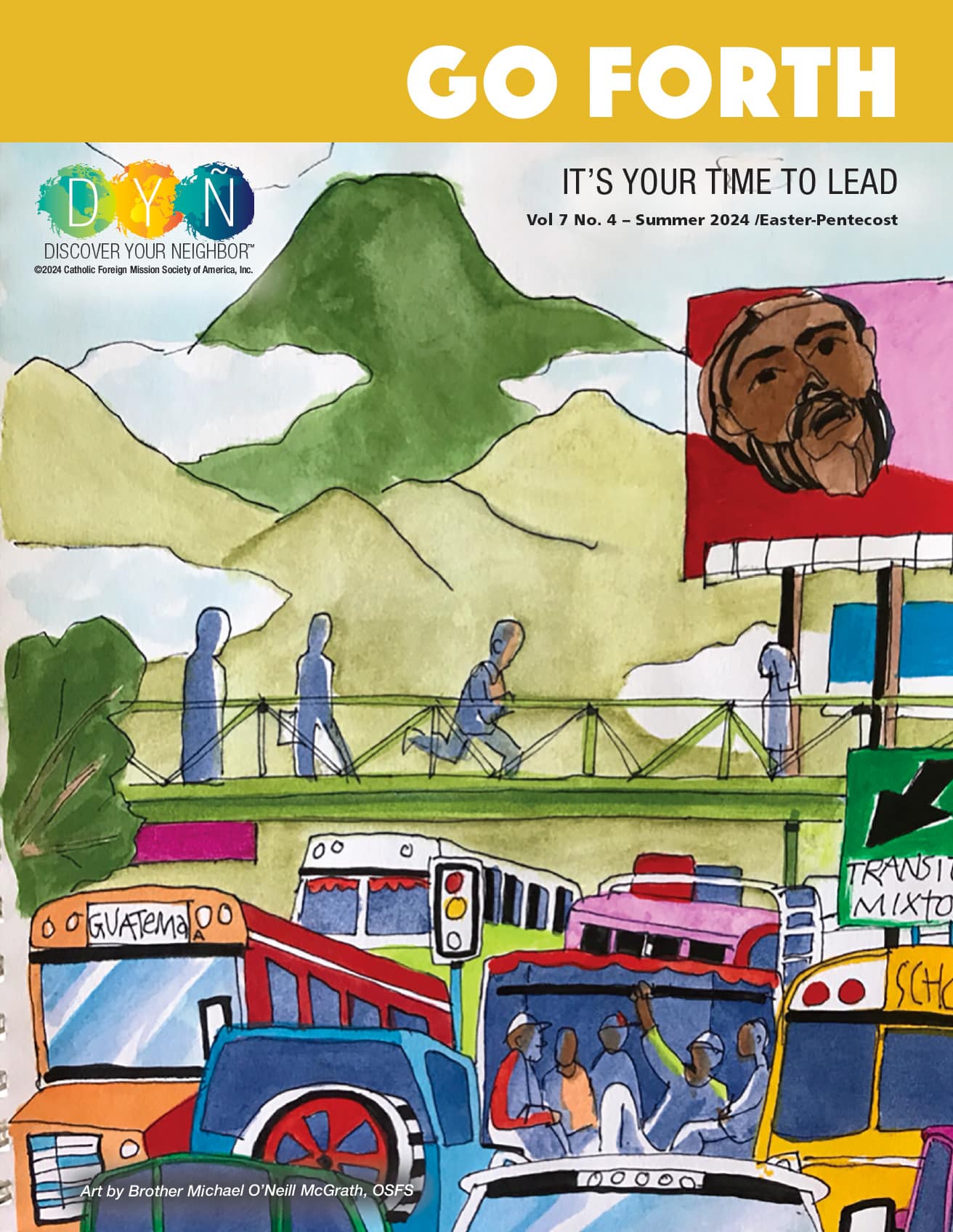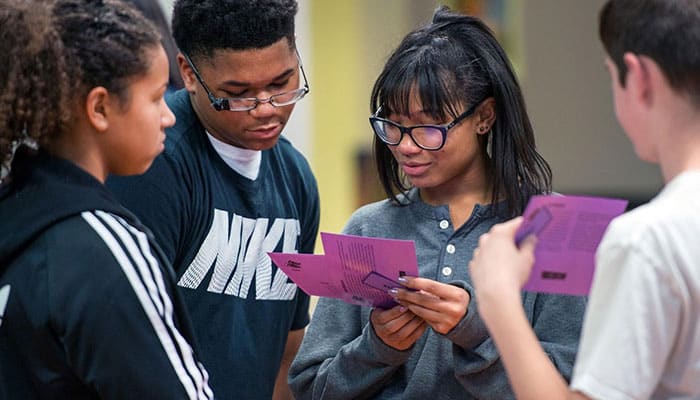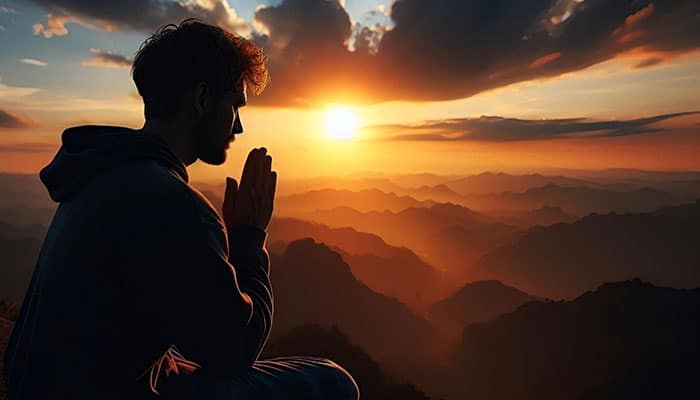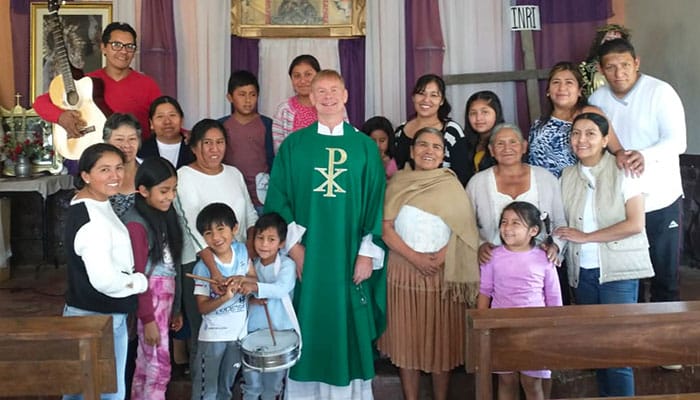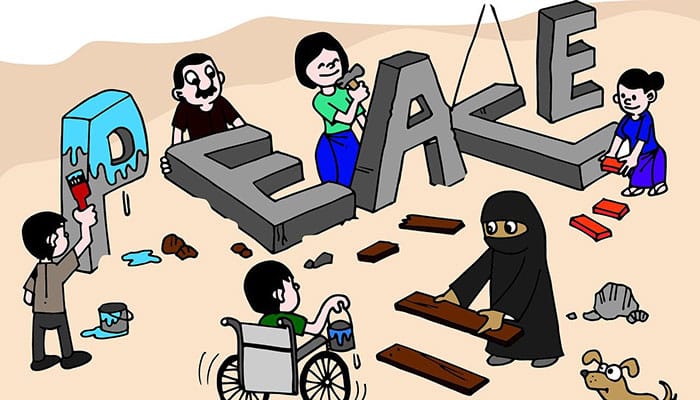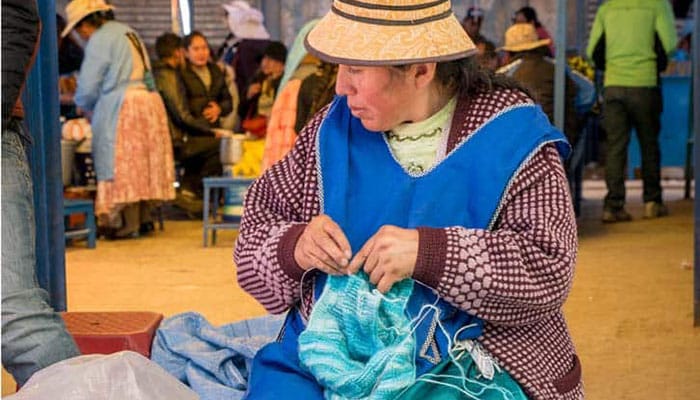Access your Middle School or K-5 Educator’s Guide for your classroom by filling out the form below. You will then be directed to a page where you can download a high quality PDF file to print out or share digitally.
Download the:
Students will IDENTIFY characteristics of servant leadership as found in scripture, prayer, their own experience, and in the mission story. They will LIST ways to build justice and peace and APPLY them to their own life situations. They will DEMONSTRATE leadership skills by responding to a conflict in their school or community. Families will take the lead to PLAN activities to promote peace over the summer.
At the beginning of this lesson PRAY:
Jesus prince of peace, help me to live a life of peace.
In a world with so much despair, let me bring hope.
In times when we find so many people struggling with loneliness, let me be a friend.
For the people who do not have what they need to survive, let me share what I have.
When I see something that is not right, let me speak up for the truth.
When I find myself unsure of world events, let me learn more.
When I see people hurt by others, let me be kind and compassionate.
Let my words and actions be those of a servant leader seeking to build a world of peace.
Amen
Maryknoll Father Gregory McPhee is learning new things in Los Molinos, Bolivia, a small village located 30-minutes from the city of Cochabamba. Prior to his ordination four years ago Fr. Greg was working as a criminal defense attorney in Syracuse, New York. Ordained at 50, Fr. Greg recalls the words that propelled him into mission: “Go, therefore, and make disciples of all nations” (Mt. 28:19a). Now he spends every day putting yanapanakuna (a new Quechua term he learned) into practice: it means “let’s help one another.”
When Fr. Greg arrived in Los Molinos he met Sister Faviola Condori Quispe and Sister Valeria of the Missionary Sisters of the Thirsting Christ. They shared that some of the problems they witnessed in the small village included depression, domestic violence, untreated illnesses and overconsumption of chicha, a homemade fermented beverage. To respond to these needs and help each other, the sisters and Father McPhee decided to form a team.
The team decided to name their project Yanapanakuna. They chose the name because it includes the values of sharing, partnerships, solidarity and communal tasks. Team member Mabel Ramírez Cornejo explained, “Our first step was going door to door, the whole team went together to each house. To get to know the people, and from there to evaluate their needs. They have welcomed us; their openness is incredible.” Fr. Greg says, “Making home visits really gives me a sense of what’s going on. When you go inside someone’s home you see what they’re dealing with, and how they’re living.”
“There was a case of an adolescent girl with epilepsy. It wasn’t the common kind.” Ramírez says. “She hadn’t been given the right medications, nor did she get tested properly.” Ramirez’s husband, a medical doctor, volunteered his services. He made sure that the girl, named Sheila, received adequate care and appropriate prescriptions. Fr. Greg, who helped pay for the treatment, says Sheila is now doing fine.
In order to support this work, the sisters sell alpaca yarn. Traveling with Fr. Greg to the mountains bordering Chile, they bought sheared fleece from families who raise alpaca herds. The sisters wash, dye and card the wool, then use a drop spindle to spin the fibers into yarn.
Although the team’s goals are large, Fr. Greg says, ministry begins with small steps. “Right now, it’s about building relationships. In the past I felt that I had to be the expert. I had to bring the message,” he says. “Now I am listening. I am seeing where is the place of trust— that’s teaching me that God is present.” It’s leading by first listening and then forming a team.
ANSWER the following questions in a small group or in a journal.
- How are Father McPhee and the sisters practicing yanapanakuna?
- How is Father McPhee practicing leadership? Why was forming a team an important step?
- How does listening help Father McPhee be a good leader?
- Pretend you are part of Fr. McPhee’s “yanakanapuna” team. What would you find exciting? What would be challenging for you?
READ THE FOLLOWING:
Old Testament: Jeremiah 1:1-9
Life of Jesus: Luke 22: 24-27
Christian Living: Philippians 2:1-11
REFLECT on the scriptures with these questions:
- In Jeremiah, what is God’s promise to the youth?
- In the scripture from Luke what does Jesus tell the disciples about being a servant leader?
- What are the qualities of a servant leader described in Philippians?
“For leadership there is only one road: service. There is no other way. If you have many qualities, the ability to communicate, etc., but you are not a servant, your leadership will fail, it is useless, it has no power to gather [people] together… Leadership must enter into service, but with a personal love for the people.”
Pope Francis, Address, May 12 2014
ANSWER the following questions:
WATCH the video “Let us Build a World of Peace” created by Maryknoll Lay Missioners. What are the concrete ways that the people in the video are demonstrating servant leadership by building peace?
In a small group or in a journal ANSWER the following questions:
After answering the above questions ASK what is one thing I/we can do to take leadership in building peace in our community? (i.e. food drive, writing letters to the homebond, eating lunch with someone new). On a large sheet of paper or white board WRITE one action you plan to do based on your answers. Under the action you plan to do LIST the first three steps you will take. Then start to do it.
Leaders are people who speak up.
Finish these sentences:
2. One way that I can lead is by ….
INTERVIEW at least five people in your class, family, or community and ask them to complete these sentences. WRITE down their answers. Before you interview them do not tell them how you answered the questions. After they answer the questions, talk with them about how you answered. DISCUSS what you can do together to work to provide needed leadership. As a class/group COMPARE the information you gathered from your interviews. Are there any common threads? How can you use this information to raise your voice and lead?
Support Father Greg’s leadership and work by sharing your resources with the team in Bolivia. Alpaca Wool Project at Maryknollsociety.org.
As a family WATCH the video “Let us Build a World of Peace” created by the Maryknoll Lay Missioners. DISCUSS how your family can take the lead to be peacemakers? CHOOSE two to three things that your family will do over the summer to actively promote peace. SCHEDULE check in times to talk about how things are going and celebrate your efforts to lead the way to peace.

